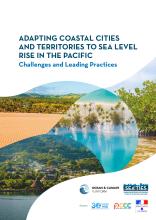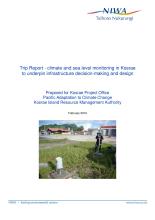COSPPac Monthly Climate Bulletin, September 2021.


SPREP Publications, Climate Change Resilience
Available Online
For October to December 2021, the dynamical models agree on above normal rainfall for Palau, FSM, central Marshall Islands, most of PNG and Solomon Is-lands, New Caledonia, Vanuatu, Fiji, Tonga, Niue, southern Cook Islands and southern French Polynesia. The models also agree on below normal rainfall for northern PNG and Solomon Islands, Nauru, Kiribati, Tuvalu, Tokelau, northern and central Cook Islands, and the northern half of French Polynesia.








